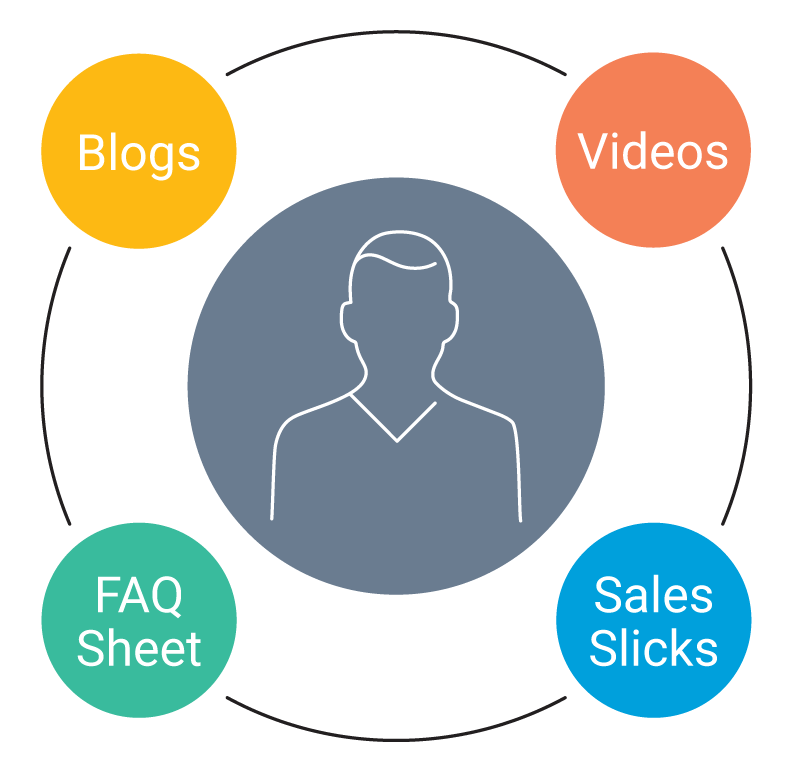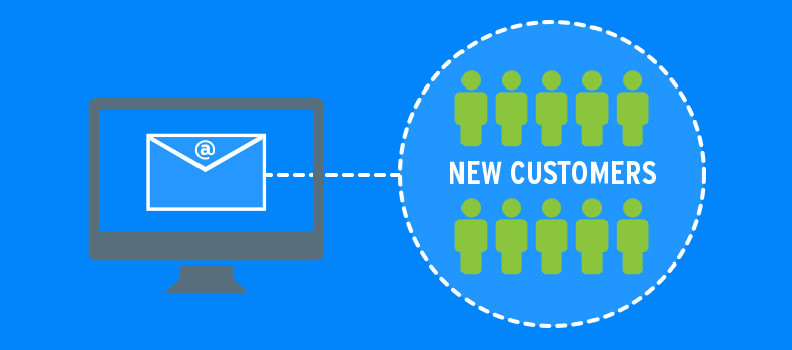When it comes to closing a sale, there is a lot more than smooth talking that goes into it. Buyers require multiple marketing touchpoints before they’re willing to give you money in exchange for your product or service—that’s as true for consumers as it is for businesses.
But what exactly are marketing touchpoints? And what are some ways to utilize touchpoints in marketing in order to ultimately make the sale?
You can find the answers to these questions (and a few more!) below.
What are marketing touchpoints?
A touchpoint, also called an impression, is a way of connecting with a potential customer. Experts state different numbers of touchpoints that will ultimately result in a successful sale. But one thing is for sure—the more marketing touchpoints, the better!
Important note: Touchpoints are more than phone calls! Though these are what most sales reps tend to think of when they hear the words, “follow up.” A touchpoint can also be the weekly email newsletter you send out, a video message, a mailed brochure, or even saying hello through social media.
How marketing touchpoints lead to purchasing
Once upon a sale, buyers received all their information about a product or service from a salesperson at the company they picked out of a phone book. But today’s buyers have a lot more purchase options—and they like to know about all of them.
Most of today’s buyers prefer the route of research. This means they are coming into purchase decisions already knowledgeable about what they’re buying, more or less removing the power of a sale from the hands of a salesperson. From watching videos to downloading infographics, eBooks, and whitepapers (all of which are individual touchpoints!) buyers want to know that what they’re getting is the right thing at the right price from the right company.
In other words, they want a solution specific to their needs. Yet only 13% of customers believe a sales person can understand their needs.
So how do you, as a sales person, show you get it? How do you make a connection that results in a sale—when no one wants to talk to you until they’re well-researched and ready to buy?
Effectively Use Marketing Touchpoints
Touching a lead using creative marketing assets such as a video or a blog is an effective way for a salesperson to reach prospects (and even sell to them!) without ever picking up a phone.
How do you do this?
Think about the more common questions or concerns voiced about your product or service. Not sure what they are? Look into the information your competitors are sharing with their followers.
From there, create thoughtful marketing assets to use as touchpoints that can answer a lead’s questions without them ever having to pick up a phone to call you. You can post them to your website, your social media channels, or even use them as a way to spice up the bland, “I’m just following up” email.
Good marketing assets show a lead that you are knowledgeable in your field and answers questions they didn’t know they had. The more connected they feel to your marketing assets, the more touchpoints of yours they will view. And the more connected they will feel to your product or service, which helps you create brand loyalty (and more sales).
Popular Touchpoints in Marketing for Businesses
When you’re starting out in business, the process of creating assets that serve as marketing touchpoints can feel overwhelming. But here are a few examples of some easy-to-create touchpoints for when you’re first starting out.


Blogs
This is a written form of content marketing that may also be referred to as an article. Blogs can be long or short and they’re an outstanding way to share knowledge about topics related to your services or products on a frequent basis. Post multiple blogs in one day or choose to only post one blog per week. Be sure to include a good mix of basic information as well as more advanced information—chances are that you’ll be surprised at what your audience doesn’t already know! Because while you may consider your hard-earned wisdom as common knowledge, chances are that your leads are starting at zero—and crave an education they can understand. These can be used for all stages of your marketing funnel and appeal to cold, warm, or hot leads.

Videos
Using the camera on your phone or video recording software online, it’s easy to create videos for your audience to consume. Similar to a blog, videos are an outstanding way of spreading knowledge about your product or service that customers don’t already know—and they can give leads an opportunity to meet who they might be buying from. And in a world where making face-to-face connections are rare, this can be a powerful tool. These can be used for all stages of your marketing funnel and appeal to cold, warm, or hot leads.

Sales Slicks
This is a term that encompasses a variety of “old school” sales materials. Think sales sheets, spec sheets, or one-sheets. They often spell out the more detailed information about a product or service. You can post these as a downloadable from your website or include them in an email to a customer who requests more information. Either way, be sure the bottom of this asset contains contact information so your lead can reach out for a demo or to learn more. These appeal to warm and hot leads.

FAQ Sheet
To you, this may sound basic. But to your customer, it shows that you understand exactly who they are, what pains they have, and how your product or service can address their individual problem. FAQs don’t only answer questions, they can also highlight the best features of your product or service. Post these to your website, make them downloadable from your site, or send them as part of a follow up email. These can be used for all stages of your marketing funnel and appeal to cold, warm, or hot leads.






